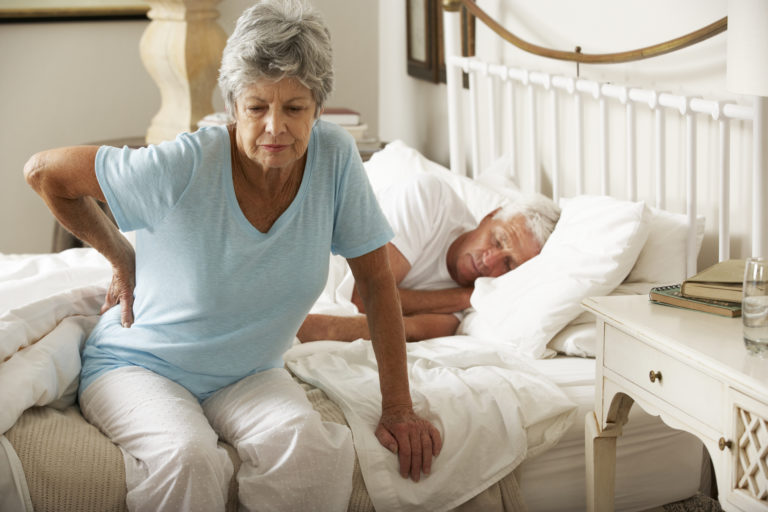
Not that it could ever happen, but if given the opportunity to defend a body part in a court of law, without question I would choose to defend the lumbar spine. With mind boggling statistics like 80% of all human beings will experience low back pain at some time during their life and that the cost of low back injury is estimated at being $100 Billion each year, there is no wonder why the lumbar spine has been the subject of much maligning and is often referred to as “a bad back”. Despite those daunting statistics, I would argue that not only is the lumbar spine ‘not guilty’ but is in fact most often a victim. The true culprit in low back dysfunction is most often a problem with a link or two in the biomechanical chain somewhere other than the low back.
The Lumbar Spine is located at ‘the crossroads of the body’. It lives where everything happens. It is a five segment stack at the base of the spine designed with the vertebral body and intervertebral disc in the anterior segment and bony protrusions in the posterior including the facet joints to either side. In a typical and healthy back the Lumbar spine has between 40-45 degrees of motion into flexion, 30-40 degrees of flexion into extension, 20 degrees of frontal plane side-bending in each direction and only 5 degrees of transverse plane rotation to each side. Initial examination may lead one to conclude that with such limited frontal and transverse plane motion, there is no wonder that the lumbar spine is often breaking down. Some might say ‘This is a terrible design flaw’. However, knowledge of chain reaction biomechanics and Applied Functional Science allow for deeper understanding.
When fed proper proprioceptive input and when surrounded by ‘friends’ who are functioning properly, the lumbar spine is perfectly equipped to carry out its roles as a shock absorber and force transmitter. The lumbar spine enjoys enough motion to allow the rest of the system to be turned on, facilitating functional strength and motion requirements elsewhere. However, when the lumbar spine is let down by its friends it tries to help the situation by picking up the “slack”. Unfortunately to do so it must work beyond its capabilities to try and get the functional job done. That is when the problems start.
It is a plausible contention that when the low back starts to hurt, look everywhere else and you’ll find the reason why. For example, say the lumbar spine has just distal to it, two undernourished hips. These hips are typically allotted a generous amount of transverse plane mostability (right amount of motion, right amount of stability). However, when they are not ‘properly fed’ the tendency is to seek stability rather than mobility and transverse plane motion at the hips is lost in function. Who then steps in to help? The under-equipped lumbar spine. With the possibility of only 5 degrees of available motion, wear and tear will start quickly, especially if the person is active despite their hip restrictions.
It would be easy if the hips were the only friends capable of letting down the lumbar spine. Typically, however, uncovering the underlying cause behind low back dysfunction is more challenging. Because it is located at the crossroads, limitation in virtually any other biomechanical segment in any plane of motion has the potential to feed abnormal and damaging forces through the lumbar spine. Hopefully your lumbar spine is surrounded by good friends who feed it appropriate forces. If not, and it has been referred to as ‘a bad back’… beware! We may team up in a defamation suit!
TRY THESE TOP THREE EXERCISES FOR LOWER BACK PAIN
Hip Flexor Stretch
How to do it:
- Half Kneeling on soft surface
- Gently move hips forward and back, side to side, and rotate right and left 30 seconds each
- Repeat on other side
- 2-3 times per day

Thoracic Doorway Stretch
How to do it:
- Stand in doorway with leg that that has sciatica behind the other leg (stride position)
- Hands grab doorframe on the side opposite of forward leg
- Then move the forward leg knee forward and oscillate for 60 seconds

Groin Stretch
How to do it:
- Place one foot on chair pointing forward
- Other foot is perpendicular on the ground
- Hold onto structure
- Move hips gently toward chair until groin stretch felt, 60 second hold

P.S. These top 3 exercises are on our website for your enjoyment along with many others. http://thesuperiortherapy.com/video-learning/
P.S.S We have a FREE lower back pain and sciatica workshop coming up, if you're ready to take the next step into pain free motion, click here for more information!



